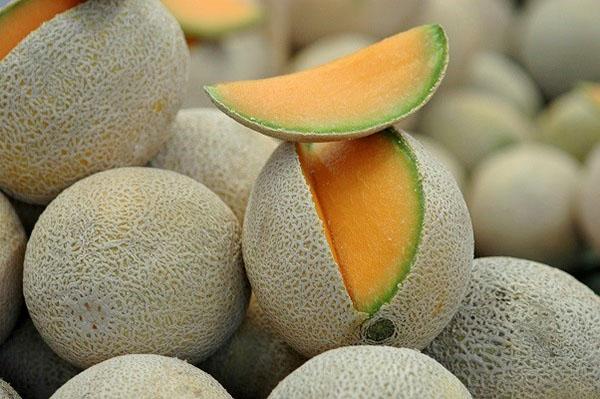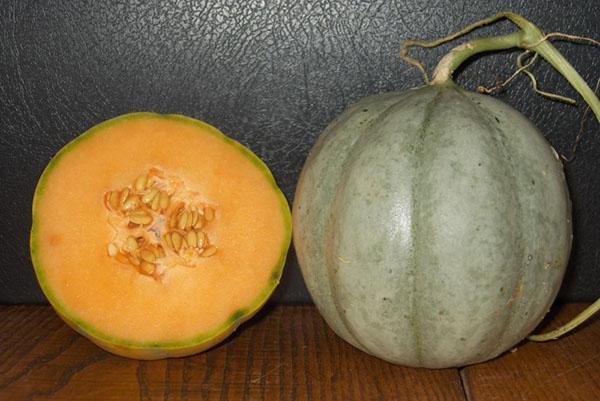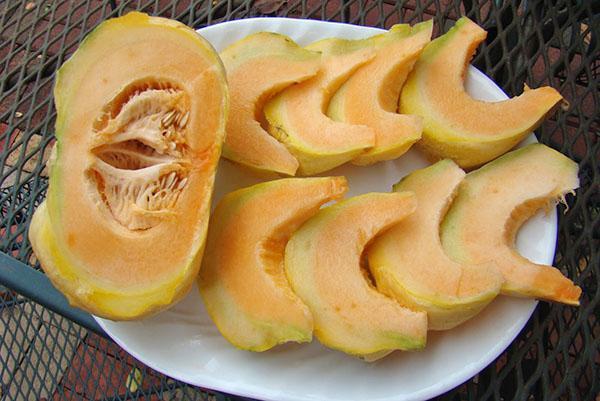One of the Western European varieties of Cantaloupe melon
 Melon Cantalupa or cantalupa is considered a Western European variety, although the origin of this subspecies is the territory of modern Turkey and Iran. Melons of this species were supposedly brought to Europe, and then to the United States, about three hundred years ago. And the first to taste the outlandish fragrant fruits was the Pope. The head of the Catholics liked the melons so much that melons were broken in Cantalupo near the papal residence, and the fruits grown on them were named after the Italian province.
Melon Cantalupa or cantalupa is considered a Western European variety, although the origin of this subspecies is the territory of modern Turkey and Iran. Melons of this species were supposedly brought to Europe, and then to the United States, about three hundred years ago. And the first to taste the outlandish fragrant fruits was the Pope. The head of the Catholics liked the melons so much that melons were broken in Cantalupo near the papal residence, and the fruits grown on them were named after the Italian province.
Rather unpretentious, with a bright orange pulp and honey-musky aroma, melons quickly won the love of the European nobility and began to be successfully grown in greenhouses and greenhouses from Italy to England. It was this subspecies that was later brought to America.
The fruits of this melon are easily recognizable not only by the appearance of the pulp and characteristic aroma. Cantaloupes have a dense gray-green or whitish bark covered with a convex reticular pattern. The weight of oval, spherical or slightly flattened fruits ranges from 500 grams to 5 kg. Melons can be either flat or segmented. Ripe fruits are easily separated from the stalk, while cantaloupes tolerate well long-term storage and do not deteriorate during transportation.
The only drawback is the relatively low sugar content. Unlike the famous Central Asian, Turkish or Iranian varieties, which accumulate up to 13% sugars, cantaloupe can contain no more than 8%. However, this circumstance does not at all confuse Europeans who are accustomed to the variety, who have received several independent varieties of cantaloupe over the previous centuries.
Variety Charentais

Variety Prescot
 Outwardly, the fruits of this type of cantaloupe are more like ribbed small pumpkins. On the cut, under the hard peel of a yellowish-orange or whitish hue, orange, slightly juicy pulp is found. In appearance, the culture differs from pumpkin in characteristic seeds and a more tender pulp with less fiber. The sugar content even in ripe fruits is low. It is used fresh, as well as for the preparation of desserts, ice cream, confectionery and candied fruits.
Outwardly, the fruits of this type of cantaloupe are more like ribbed small pumpkins. On the cut, under the hard peel of a yellowish-orange or whitish hue, orange, slightly juicy pulp is found. In appearance, the culture differs from pumpkin in characteristic seeds and a more tender pulp with less fiber. The sugar content even in ripe fruits is low. It is used fresh, as well as for the preparation of desserts, ice cream, confectionery and candied fruits.
Cavaillon variety
 Small to medium sized cantaloupe fruits of this type have a spherical shape and a gray-green surface covered with a pronounced mesh. Melons are poorly segmented; green stripes are clearly visible at the site of division into segments. Like other types of cantaloupe, these melons have a hard, rather thick bark, which hides an orange firm, sweet flesh.
Small to medium sized cantaloupe fruits of this type have a spherical shape and a gray-green surface covered with a pronounced mesh. Melons are poorly segmented; green stripes are clearly visible at the site of division into segments. Like other types of cantaloupe, these melons have a hard, rather thick bark, which hides an orange firm, sweet flesh.
American melon
 American melons are most often hybrids of cantaloupe with other sweeter varieties. An example is the variety type Rockmelon with a thick gray-green mesh skin and juicy sweet pulp. American melons have a bright nutmeg aroma. The pulp can be either orange or white or greenish, like in Asia Minor melons cash register.
American melons are most often hybrids of cantaloupe with other sweeter varieties. An example is the variety type Rockmelon with a thick gray-green mesh skin and juicy sweet pulp. American melons have a bright nutmeg aroma. The pulp can be either orange or white or greenish, like in Asia Minor melons cash register.